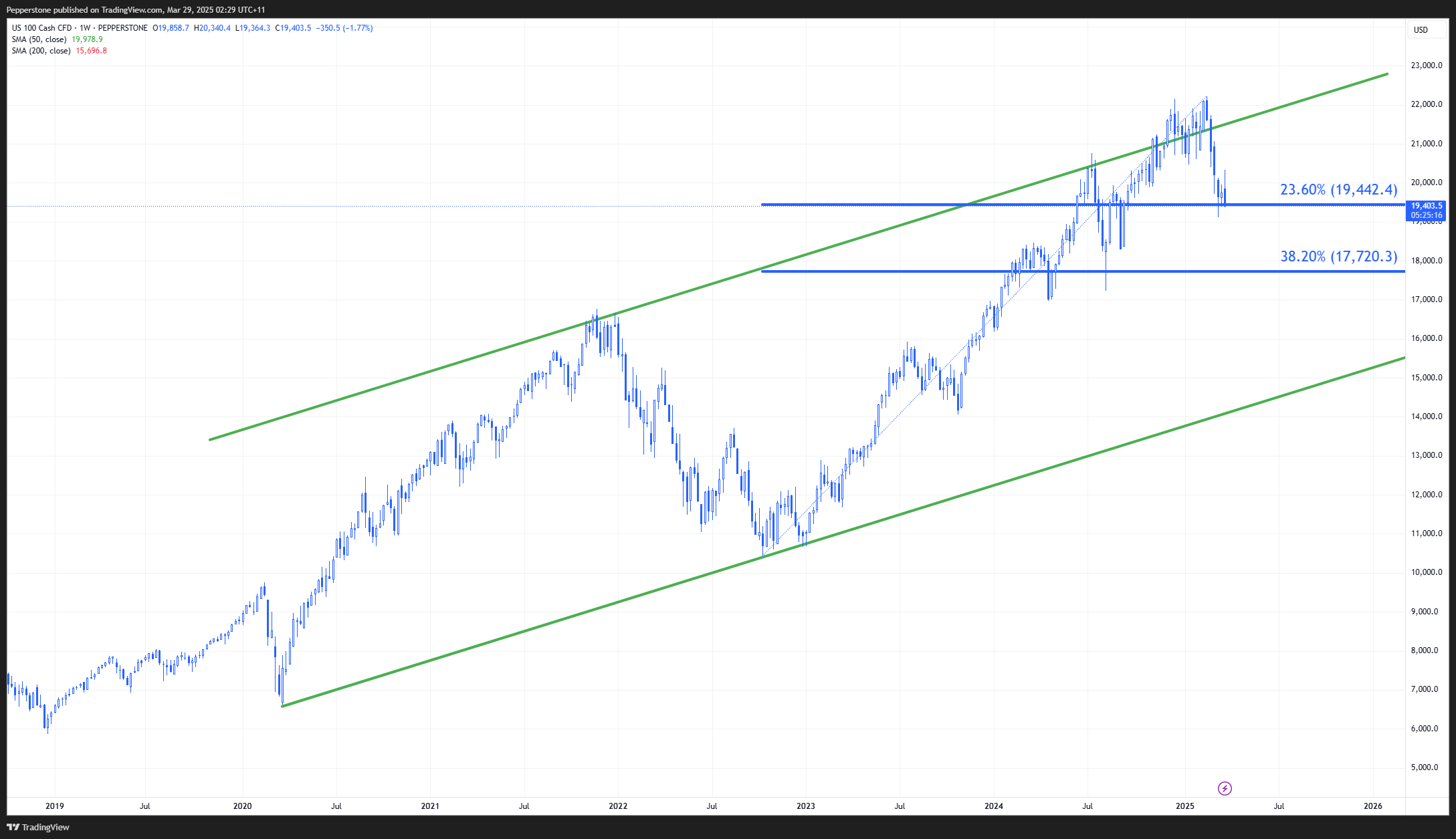Analysis
Stagflation Risks: US Equities Fall Amid Inflationary Pressures and Trade Tensions

The S&P 500 and Nasdaq dropped more than 1%, reflecting a clear deterioration in market sentiment amid multiple adverse factors.
The bearish session unfolded in an environment dominated by worrying signs of inflationary pressures, particularly the Personal Consumption Expenditures (PCE) Price Index, a key gauge followed by the Federal Reserve (FED). The core PCE posted a monthly increase of 0.4%, the largest gain since January 2024, exceeding market expectations. On an annual basis, this measure accelerated to a concerning 2.8%, signaling persistent inflationary pressure that could complicate future monetary policy decisions by the FED.
At the same time, soft data has continued to deteriorate significantly, adding uncertainty regarding the resilience of hard data. The University of Michigan consumer sentiment index fell to 57, its lowest level since November 2022, due to negative expectations regarding personal finances, unemployment, and inflation. In fact, two-thirds of consumers anticipate a rise in the unemployment rate, reflecting a level of concern not seen since the 2009 financial crisis.
Much of this uncertainty has been fueled by recent policies implemented by the Trump administration, particularly government spending cuts and aggressive trade policies. The latest move came with the announcement of 25% tariffs on imported cars and auto parts, effective April 3. This measure triggered an immediate negative reaction in both local and international markets, anticipating higher costs for US consumers and potential trade retaliation from key partners such as the European Union, Canada, China, Japan, and South Korea.
At the sector level, discretionary consumer goods were the most affected on Friday, while utilities showed relative resilience. This uneven performance supports the case for a defensive market, reflecting a growing risk aversion among investors.
The combination of inflationary pressures, economic slowdown, and rising trade tensions creates a challenging environment for equities. Overall, current conditions point toward a concerning scenario with signs of stagflation: low economic growth coupled with persistent inflation and a rapidly deteriorating economic sentiment.
In conclusion, it will be key to closely monitor the evolution of hard economic data as well as the international response to US trade policies. The big question in the coming months is whether the current fragility in economic sentiment will ultimately translate into hard economic indicators, decisively impacting equities.
Nasdaq 100 Weekly Chart:

Ready to trade?
It's quick and easy to get started. Apply in minutes with our simple application process.
The material provided here has not been prepared in accordance with legal requirements designed to promote the independence of investment research and as such is considered to be a marketing communication. Whilst it is not subject to any prohibition on dealing ahead of the dissemination of investment research we will not seek to take any advantage before providing it to our clients.
Pepperstone doesn’t represent that the material provided here is accurate, current or complete, and therefore shouldn’t be relied upon as such. The information, whether from a third party or not, isn’t to be considered as a recommendation; or an offer to buy or sell; or the solicitation of an offer to buy or sell any security, financial product or instrument; or to participate in any particular trading strategy. It does not take into account readers’ financial situation or investment objectives. We advise any readers of this content to seek their own advice. Without the approval of Pepperstone, reproduction or redistribution of this information isn’t permitted.